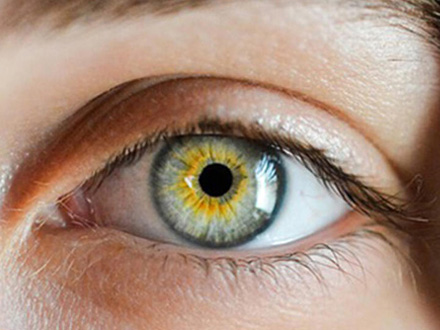
Age-related maclar Degeneration (AMD) is an eye disease that may get worse over time. It's the leading cause of severe, permanent Vision loss in people over age 60.
It happens when the small central portion of your retina, called the Macle, wears down. The retina is the light-sensing nerve tissue at the back of your eye. Because the disease happens as you get older, it's often called age-related macular degeneration. It usually doesn't cause blindness but might cause severe vision problems.
Another form of macular degeneration, called Stargardt disease or juvenile macular degeneration, affects children and young adults.
Wet vs. Dry Macular Degeneration There are two main types of age-related macular degeneration:
Dry form. People with this may have yellow deposits, called drusen, in their macula. A few small drusen may not cause changes in your vision But as they get bigger and more numerous, they might dim or distort your vision, especially when you read. As the condition gets worse, the light-sensitive cells in your macula get thinner and eventually die. In the atrophic form, you may have blind spots in the center of your vision. As that gets worse, you might lose central vision.
Wet form. Blood vessels grow from underneath your macula. These blood vessels leak blood and fluid into your retina. Your vision is distorted so that straight lines look wavy. You may also have blind spots and loss of central vision. These blood vessels and their bleeding eventually form a scar, leading to permanent loss of central vision.
Most people with macular degeneration have the dry form, but the dry form can lead to the wet form. Only about 10% of people with macular degeneration get the wet form.
If you have macular degeneration, you'll need to monitor your eyesight carefully and see your eye doctor regularly.
Symptoms of Macular Degeneration
Early on, you might not have any noticeable signs of macular degeneration. It might not be diagnosed until it gets worse or affects both eyes
Symptoms of macular degeneration may include:
• Worse or less clear vision. Your vision might be blurry, and it may be hard to read fine print or drive.
• Dark, blurry areas in the center of your vision
• Rarely, worse or different color perception
If you have any of these symptoms, go to an eye doctor as soon as possible
Your doctor can check you for age-related macular degeneration when you see him for a routine eye exam. An early diagnosis will let you start treatment that may delay some symptoms or make them less severe.
He'll test your vision and also examine your retina -- a layer of tissue at the back of your eye that processes light. He'll look for tiny yellow deposits called drusen under the retina. It's a common early sign of the disease. Your doctor may also ask you to look at an Amsler grid -- a pattern of straight lines that's like a checkerboard. If some of the lines appear wavy to you or some of them are missing, it could be a sign of macular degeneration.
Tests
If your doctor thinks you have age-related macular degeneration, he may want you to have one or both of these exams:
Optical coherence tomography (OCT). It's a special photograph that shows a magnified 3D image of your retina. This method helps your doctor see if your retinal layers are distorted. He can also see if swelling is getting better or worse if you had treatment with injections or laser.
Fluorescein angiography. In this procedure, your doctor injects a dye into a vein in your arm. He takes photos as the dye reaches your eye and flows through the blood vessels of the retina. The images will show new vessels or vessels that are leaking fluid or blood in the macula -- a small area at the center of your retina. degeneration There's no cure, but treatment for age-related me (AMD) may slow the disease and keep you from having a severe loss of vision. Talk to your doctor about the best way to manage your condition.
Your Treatment Options
Anti-angiogenic drugs. Your doctor injects these medications into your eye. They stop new blood vessels from forming and block the leaking from the abnormal vessels that cause wet macular degeneration.
Some people who take these drugs have been able to regain vision that they lost from AMD. You will likely need to get the treatment repeated on follow-up visits. Laser therapy. Your doctor may suggest a treatment with high-energy laser light that can sometimes destroy actively growing abnormal blood vessels from AMD.
Photodynamic laser therapy. It's a two-step treatment that uses a light-sensitive drug to damage your abnormal blood vessels.
Your doctor injects a medication into your bloodstream, which gets absorbed by the abnormal blood vessels in your eye. Next, he shines a laser into the eye to activate the drug, which damages the abnormal blood vessels.
A large study by the National Eye Institute of the National Institutes of Health, called AREDS (Age-Related Eye Disease Study), shows benefits if you take a supplement formula that has vitamins C and E, beta-carotene, zinc, and copper. According to the research, the risk for vision loss goes down for some people with intermediate to advanced dry AMD.